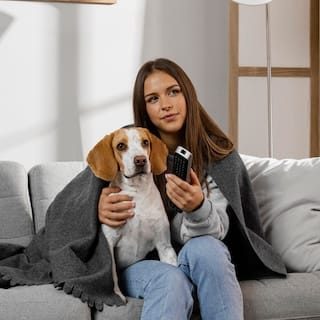The Renaissance of Pet Care: A New Age of Awareness in the 18th Century

In the backdrop of the Renaissance, the seeds of modern veterinary medicine were sown by pioneering individuals whose groundbreaking contributions paved the way for organized animal healthcare. Noteworthy figures such as Claude Bourgelat and William Youatt spearheaded the establishment of formal veterinary education and advocated for structured principles of animal treatment. Their visionary endeavors not only elevated the standard of care for livestock but also laid the foundation for comprehensive pet healthcare.
The Birth of Modern Veterinary Medicine
The Renaissance witnessed an unprecedented surge in dog ownership among the European nobility, transcending traditional working roles to becoming cherished companions. Canine companions, especially lapdogs and toy breeds, were extravagantly adorned with ornate collars, fed sumptuous diets, and immortalized in artistic portraits. This cultural shift not only fostered a deep bond between humans and dogs but also set the stage for personalized pet care practices that transcended mere utility.
The Rise of Dog Ownership Among European Nobility
As explorers and traders navigated uncharted territories, they carried not only goods but also animals to exotic locales, catalyzing a global exchange of pet keeping practices. This intercontinental intermingling introduced diverse breeds and husbandry methods to new lands, enriching local pet care ecosystems with novel perspectives and redefining the fabric of human-animal relationships worldwide.
Global Influences on Pet Keeping Practices
In the pages of classic literature, pets have perennially served as allegorical conduits for sentiments like loyalty, empathy, and compassion. From Shakespeare’s faithful hounds to Edgar Allan Poe’s enigmatic ravens, these literary companions impart profound insights into humane treatment, emphasizing responsibility and respect as intrinsic components of pet care ethics.
The art and science of selective breeding emerged during the Renaissance era as esteemed scholars began applying empirical principles to enhance specific traits in companion animals. However, this practice also ignited deliberations on ethical ramifications concerning genetic manipulation and breed standardization, laying the groundwork for contemporary discussions on responsible breeding practices and genetic diversity.
Pets in Classic Literature and Their Lessons
Pioneering voices advocating for animal welfare surfaced during the Renaissance, challenging traditional paradigms by emphasizing empathy and advocacy for sentient beings. Advocates like George Nicholson waged moral crusades against animal cruelty and propagated empathetic stewardship toward pets, marking a pivotal juncture in redefining societal attitudes towards animals beyond utilitarian perspectives.
The Science and Ethics of Selective Animal Breeding
The Enlightenment era ushered in a paradigm shift in human cognition towards recognizing the sentience and intrinsic worth of companion animals. Philosophers like René Descartes became ardent advocates for acknowledging animals’ capacity for pain and emotion, fostering a burgeoning sentiment that evoked introspection on ethical treatment and instilled an emerging consciousness regarding pet care practices.
The Emergence of Animal Rights Movements
In an era permeated by grandeur and opulence, pets served as ostentatious symbols denoting their owners' social status and affluence. From rare avian specimens to lavishly adorned lapdogs, pets encapsulated prestige while symbolizing their owners’ refined tastes. This cultural manifestation not only accentuated the personalized bond between humans and pets but also influenced the proliferation of luxurious pet care accouterments.
Frequently Asked Questions
Claude Bourgelat and William Youatt played pivotal roles in establishing modern veterinary medicine during the Renaissance. They advocated for formal veterinary education and structured treatment principles, significantly improving animal healthcare standards and laying the groundwork for comprehensive pet care practices that we recognize today.
During the Renaissance, dog ownership among European nobility surged as dogs transitioned from working animals to cherished companions. Lapdogs and toy breeds became fashionable, adorned with ornate collars and lavish diets, fostering a deep bond between humans and dogs and paving the way for personalized pet care practices.
The Renaissance saw the emergence of selective breeding, where scholars applied scientific principles to enhance specific traits in companion animals. This practice sparked ethical debates regarding genetic manipulation and breed standardization, highlighting the importance of responsible breeding practices and genetic diversity in contemporary discussions about animal welfare.






